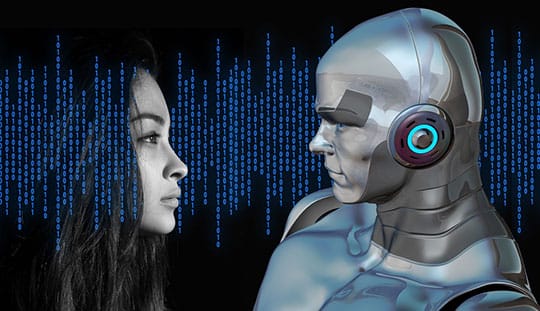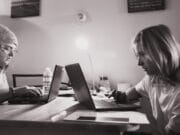The important part machines play in today’s world is no news to anybody, especially the manufacturing industry, where automation has been around since the 1970s. But with the quick pace technology is evolving at today, what will the future bring for the manufacturing industry? Are robots going to replace the human workforce? Well, not really. Experts say that science-fiction aside, the evolution automation has an abundance of benefits, from precision to cost reduction and safety.
With the way the automation industry has evolved nowadays, robotic arms have become less expensive and can be installed basically anywhere, from a gigantic manufacturing hall to smaller businesses.
But how is robotics really changing the manufacturing industry and what impact is this going to have on the future of humanity? To answer that question, we must first understand how and why were industrial robots invented in the first place.
History of Robotics

The history of the industrial robot, most commonly known as the robotic arm, dates back in the 1950s. However, Universal Robots, an expert in robotics automation, explains that what revolutionized the industry was the first robotic arm completely controlled by a computer, designed in 1696. At first, they were used predominantly in the automotive industry, but with the advances of technology and the increasing variety of tools used for the end-of-arm, they slowly build their way into every segment of the manufacturing industry.
Considered the innovation of the industrial era, the robotic arm was, at first, not as trusted as it is nowadays. Being a relatively new and somewhat fictional concept, the “manipulator”, as it was called back then did not have as much catch to the public as it does now. Trying to incorporate the machine into the life of human workers was the hardest part, as works viewed it first as a threat, then as a way to add more tasks to their jobs, as the machine was much faster than they were and they could not keep up with it.
Recommended for you: 7 Occupations Irreplaceable by Artificial Intelligence (AI).
With the numerous sensors that were developed an included into the robotic arm, they became safer and easier to use and here’s just a quick description of the most important one’s:
- 2D Vision: a camera was incorporate into the industrial robot, to detect movement and allow the robot to adapt its actions based on the data obtained.
- Force sensor: this allows the robot to understand and adapt the force it applies.
- Collision sensor: like the name describes this allows the robot to be aware of its surroundings and avoid collisions.
- Safety Sensor: this sensor is used to ensure the safety of the people working near the robot, as it alerts the machine to move or stop if a person is entering a certain range.
Robotics and Humans Working Side by Side

Gone are the days where humans would ensemble by hand a whole computer or car. The evolution of robotics was much needed in the manufacturing industry, as it was becoming harder and harder for companies to find and train workers for dangerous, dirty and repetitive tasks. With numerous studies showing that performing repetitive tasks is damaging the focus and productivity of the workers, machines were the next big thing. They can perform repetitive tasks around the clock, don’t get tired and are easy to reprogram for different purposes, while human workers can direct their attention towards problem-solving processes that focus more on creativity, adaptation and on-the-job learning.
Robots should not be seen as a threat to human jobs, but rather as a way of improving work quality and making our life easier. Exactly the way members of a team help and support each other, robots should help liberate humans from the mundane and repetitive task that may make us tired or bored. Take for example the hazardous or chemical materials that could harm workers, increasing the dangers of losing human lives. Robots can fill the jobs that are too dangerous for humans and even if something happens, you will be dealing with the loss of a machine, instead of death or serious injury.
Taking a look at the bigger picture, the growing adoption of robotics in the manufacturing industry may have a better impact on humanity than we think. With repetitive and boring tasks out of the table for humans, they can focus on improving their cognitive skills. One of the most important skills that human possess is adaptability, so when the more unqualified jobs have been taken over by robots, humans were forced to study for jobs that require special qualification, getting degrees in various fields and becoming more educated.
What Will the Future Bring?

With the rapidity the automation field is evolving, experts are already trying to predict what the future of manufacturing will look like:
- Fully automated factories: more and factories can run by just a couple of people that will operate automated machines. But with the evolution of AI, fully automated factories will become possible, with remote control form a remote central hub.
- Repair costs will be reduced: AI will be able to correct manufacturing errors before cost damage is done, improving consistency and quality.
- Basic expenses will be completely cut: With factories where no human involvement is necessary, light and head costs will be completely cut off, as the sensors on the machines will be evolved enough to allow them to operate in the dark, and we may be closer to that than you imagine. Think about the technology used on smartphones to detect your face in the dark. This will save energy and help the environment.
You may also like: How to Use AI & Machine Learning on Your Startup Project?
And on the more industrial side, the recent advances include:
- 3D Printing: although being around for more than 30 years, 3D Printing has only recently received more improvements for accuracy and capacity. They help manufacture customized and efficient designs, with lighter and stronger products.
- Cloud Storage: with the data from all machines automatically uploaded into the cloud, it’s easier to be accessed and recovered in the eventuality of a system crash, avoiding unexpected costs and keeping the information safe.
- Nanomanufacturing: this refers to the manufacturing of products on a molecular level, benefiting the future generations of electronics and computing devices.





